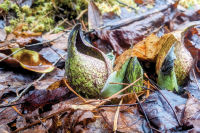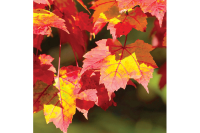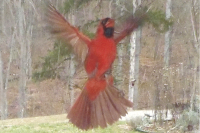Georgia’s Black Rock State Park worth the visit
 Perhaps you’re looking for a new site to visit this summer? If so, consider making a visit to Black Rock State Mountain Park, which is situated in Rabun County, Ga., just off U.S. 441 several miles south of where Macon County adjoins Georgia. It’s about a half-hour drive from Franklin. The 1,500-acre park is the highest in the Georgia system of state parks and is one of the most interesting to visit. Named for the numerous dark granite outcrops, it stretches for more than three miles along the Eastern Continental Divide.
Perhaps you’re looking for a new site to visit this summer? If so, consider making a visit to Black Rock State Mountain Park, which is situated in Rabun County, Ga., just off U.S. 441 several miles south of where Macon County adjoins Georgia. It’s about a half-hour drive from Franklin. The 1,500-acre park is the highest in the Georgia system of state parks and is one of the most interesting to visit. Named for the numerous dark granite outcrops, it stretches for more than three miles along the Eastern Continental Divide.
Whenever the topic of the Eastern Continental Divide (ECD) comes up in natural history workshops, there’s always a lot of interest. Here in Western North Carolina, we spot from time to time highway markers indicating we’re crossing the ECD at elevations ranging from 1,500 to 6,000 feet. But few of us have a clear idea of what it means and where it goes.
The ECD is that almost imaginary, pencil-thin boundary which establishes the divide between waters that flow eastward via various river systems into the Atlantic and those that flow westward via the Mississippi River system into the Gulf of Mexico. One of my interests has been delineating — as best as I can — the ECD from southwestern Virginia through northwestern South Carolina to its southern terminus in north Georgia. Someday I hope to trace the ECD from Virginia to its northern terminus. Meanwhile let’s take a look at the ECD in our immediate area, starting in Blacksburg, Va.
The runway of the airport at Blacksburg (located in the Ridge and Valley Province of the Southern Appalachians) diverts waters eastward into the Atlantic on one side and westward into the Gulf of Mexico via the Ohio and Mississippi systems on the other. The ECD enters the Blue Ridge Province at the tiny village of Copper Hill just south of Roanoke. From there, it winds southward along the Blue Ridge Escarpment (following the general route of the Blue Ridge Parkway in many areas) over the crests of familiar landmarks like Bluff and Grandfather mountains. In the area of Sassafras Mountain, the ECD is the state boundary between N.C. and S.C. From there, it turns back into N.C. and traverses Cold Mountain south of Waynesville and numerous peaks in the Highlands area like Whiteside, Satulah, and Little and Big Scaly mountains. The ECD crosses into Georgia at Rabun Bald and Black Rock State Park before entering N.C. yet again. After circling the Standing Indian area at the headwaters of the Nantahala River, it passes back into Georgia and follows the Appalachian Trail southward to Young Lick Knob southwest of Clayton.
The hardwood canopy at Black Rock is comprised of northern red oak, white oak, black gum, sourwood, maple, buckeye, and other deciduous trees. Numerous trails of varying degrees of difficulty and length crisscross the park. It’s not difficult to find a spot along one of the ridges where you can stand with one foot in terrain where the water is headed to the Gulf and the other in terrain where the water is headed for the Atlantic.
Related Items
The facility has tent and trailer sites, walk-in camp sites, rental cottages, a playground, and a 17-acre lake. For specific information on visitation and use fees or special programs, write Black Rock Mountain State Park, Mountain City, Ga., 30562; call 404.746.2141; or go online at www.gastateparks.org/BlackRockMountain.
George Ellison wrote the biographical introductions for the reissues of two Appalachian classics: Horace Kephart’s Our Southern Highlanders and James Mooney’s History, Myths, and Sacred Formulas of the Cherokees. In June 2005, a selection of his Back Then columns was published by The History Press in Charleston as Mountain Passages: Natural and Cultural History of Western North Carolina and the Great Smoky Mountains. Readers can contact him at P.O. Box 1262, Bryson City, N.C., 28713, or at This email address is being protected from spambots. You need JavaScript enabled to view it..













